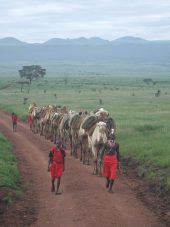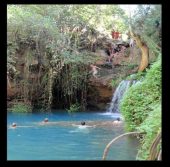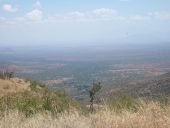The pink dung of the Elephants at Lariak-Orook Spring
Gordie Owles files another from East Africa…. Just before the rain broke here Kitonga took a new route. This particular safari, started at Lewa Wilderness Trails, then walked through dry forests, Borana and lands of the Laikipiak Maasai, before coming eventually to the water. Our destination was the Ewaso Nyiro river and its elephants.
In the early morning as we started our day, we had a fantastic view of Oldonyo Keeri (the Maasai name for Mt Kenya). We walked to one of the most beautiful indigenous forests in Kenya, the Mokogodo forest. As we got closer, we saw zebra and Grants gazelles and by midday we were sitting under the African pencil cedar and olive trees; in the nice cool air, listening to birds like the Turracos. This was our camp for the night.
It was those same birds that woke us and we continued our walk through the forest to the Lariak-Orook spring, a beautiful stream coming out of nowhere, and there we made our camp. Just before dinner we started to hear trees breaking and knew that the elephants were getting closer. By the time we finished eating, and by the light of the moon we could see them just below us. They spent the whole night drinking at the spring.
After breakfast we journeyed on past Dol Dol village, which used to be the centre of the Laikipiak Maasai Clan in the 19thcentury. Here we came across pink elephant dung. Because of the drought and over grazing by livestock, there is nothing for the elephants to eat apart from a cactus like plant with pink juicy fruits (Opuntia Vulguris), which they certainly seem to be enjoying! We spent the night in Keresure, a beautiful dry river bed which is the boundary of the Ilmomonyot and ILdikirii Laikipiak Sub-Clans. It is here where the bushes are very short, that we began to catch sight of the elephants we had come to view.
Our last day took us through Oldonyiro where the Lewuaso live, another Laikipiak Maasai Sub-Clan, who are traditional bee keepers. Almost every big tree has around fifteen suspended bee hives. Holed logs are hung under the trees and aside from providing homes for the bees, help protect them from the elephant’s destruction. We walked along a lugga and over a small rocky range to the big valley that holds the Ewaso Nyiro River.
Thanks to Kitonga Lipan for the latest report from Lewa.



